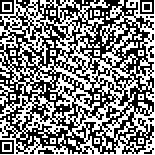| 摘要: |
| [摘要] 目的 探讨基于深度学习的神经网络智能图像识别技术应用于宫颈鳞状上皮内病变细胞学筛查的可行性。方法 选择2017-07~2017-12期间该院经宫腔镜下宫颈组织活检确诊并有宫颈液基细胞学检查结果的体检者共373例,将基于深度学习的神经网络智能图像识别系统(简称智能系统)阅片与人工阅片的宫颈液基细胞学检查结果与阴道镜下宫颈组织活检相对照。结果 两种阅片方法对宫颈鳞状上皮内病变的敏感度比较,差异无统计学意义(P>0.05);智能系统阅片对宫颈鳞状上皮内病变的特异度、符合率显著低于人工阅片,差异有统计学意义(P<0.05)。结论 智能系统有可能为宫颈鳞状上皮内病变细胞学筛查提供又一实用有效的手段。 |
| 关键词: 病理学 细胞学筛查 宫颈上皮内病变 图像处理 深度学习 神经网络 计算机辅助 |
| DOI:10.3969/j.issn.1674-3806.2019.03.11 |
| 分类号:R 361+.3 |
| 基金项目:东莞市社会科技发展(一般)项目(编号:2018507150011327) |
|
| Feasibility study of a new technique of artificial intelligence and image analysis based on the deep learning neural networks for cytological screening of cervical intraepithelial lesions |
|
ZHANG Shi-hao, XIAN Li-ying, GAO Min, et al.
|
|
Department of Pathology, Dongguan People′s Hospital, Guangdong 523059, China
|
| Abstract: |
| [Abstract] Objective To explore the feasibility of a new technique of artificial intelligence and image analysis based on the deep learning neural networks for cytological screening of cervical intraepithelial lesions. Methods Three hundred and seventy-three cases who took physical examination in our hospital during July 2017 and December 2017 were diagnosed with cervical intraepithelial lesions by cervical biopsy under hysteroscopy and liquid-based cervical cytology. These patients were taken as the study subjects. The network liquid-based cytology results of the network intelligent image recognition system(the intelligent system) reading and manual reading were compared with the results of the colposcopy cervical tissue biopsy. Results There was no significant difference between the two methods in sensitivity of cervical intraepithelial lesions(P>0.05). The specificity and coincidence rates of the intelligent system for cervical intraepithelial lesions were significantly lower than those of manual examination(P<0.05). Conclusion The intelligent system may provide another practical and effective means of cytological screening of cervical intraepithelial lesions. |
| Key words: Pathology Cytological screening Cervical intraepithelial lesion Image Processing Deep learning Neural network Computer-assisted |

